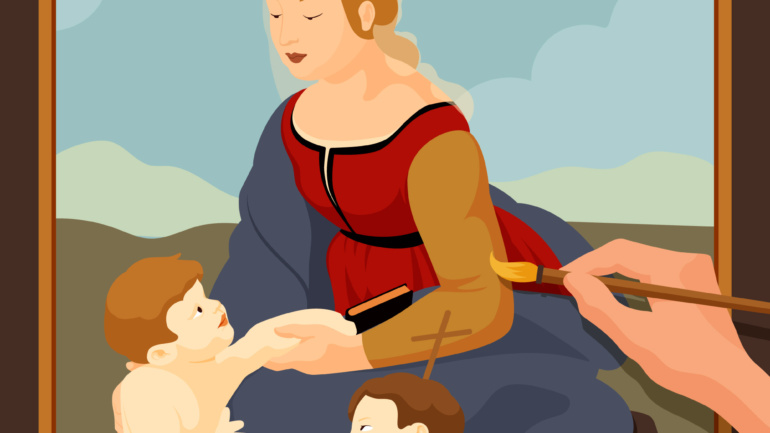Michelangelo: The Masterpiece of Marble Sculpture
- Michelangelo can be considered the “greatest artist of all time.” Like Leonardo da Vinci, he embodied various roles and was a great sculptor, painter, architect, and poet of the Renaissance period. Among these roles, his achievements in sculpture stand the tallest, representing the pinnacle of Renaissance sculpture. He, along with da Vinci and Raphael, is known as one of the “Three Giants of the Renaissance.”
- Michelangelo (1475-1564), full name Michelangelo Buonarroti, was born in a town near Florence, Italy. He lived a long life, reaching the age of 89, and devoted over 70 years to his art, leaving behind a wealth of exceptional works. His most famous works include the Sistine Chapel ceiling fresco The Creation of Adam and the statue of David.
- Although Michelangelo produced monumental paintings like the Sistine ceiling fresco, he always considered himself primarily a sculptor. He dedicated his life to sculpture, and his identity as a sculptor firmly established his place in the world of art. His main sculptural works were made from marble, a medium that is considered the most challenging in sculpture, showcasing his extraordinary craftsmanship.
- One of the most common materials in sculpture is clay, which is relatively easy to work with. Clay is a flexible medium that allows for both additive and subtractive techniques—artists can mold it by hand or carve it with tools. Once the sculpture is formed, it is fired in a kiln to harden. Because clay is inexpensive and requires less technical skill, many artists in the Renaissance chose this material. However, the brownish tone of clay lacks the pure elegance of marble. Michelangelo chose marble for its difficulty and its ability to better express the themes of his works.
- Another common material is bronze, but it is much harder than marble and cannot be carved with chisels. Instead, it is first sculpted in wax, then covered in a clay shell. After the sculpture is heated, the wax melts away, and molten bronze is poured into the mold. Once cooled, the clay shell is broken, and the sculpture is polished. Bronze sculptures, however, are limited in their ability to showcase detailed features because of their darker color. Marble, on the other hand, allows for finer details to be carved and fully displayed. For example, Michelangelo’s marble David is far more intricate than Donatello’s bronze version, with more visible muscle texture and fuller form.
- Michelangelo’s choice of marble was highly demanding from the very start. Just as with jade carving in China, marble sculpture requires careful selection of the stone’s origin—high-quality marble must be pure white and large enough to provide ample space for artistic expression. It is said that Michelangelo frequently visited the Carrara quarry in Florence, which was known for producing large, high-quality blocks of marble.
- Marble sculpture requires a high level of skill. Unlike clay, marble offers no chance for correction; every cut made by the artist is final. The hardness of marble demands the use of a hammer and chisel, and the artist must carve the stone with great force and precision. One must be careful not to strike too hard, as this could ruin the piece. There is a famous story about a sculptor who, after damaging a piece of marble through excessive force, abandoned it. Michelangelo, however, took the same piece and turned it into the David sculpture, with the missing chunk being used for David’s raised foot, illustrating Michelangelo’s exceptional skill.
- The difficulty and cost of marble sculpture are high, but the pure white marble enables the artist to express lines and details with elegance. The material’s noble color adds to the aesthetic and expressive power of the sculpture. This shows that, in classical art, technical skill and beauty are often proportional, as the level of technical mastery required enhances the beauty of the final piece.

Examples of Clay Sculptures

Example of a Clay Sculpture – Detail

Marble Carving Process: One hand holds the chisel, the other holds the hammer

Donatello – David (Bronze Sculpture)

Michelangelo – David (Marble Sculpture)
Tip
White Marble Sculptures Were Actually “Serendipitous”

Colored Venus Marble Statue
Renaissance marble sculptures were largely modeled after ancient Greek sculptures that had been unearthed. In ancient times, these sculptures were actually painted, but over centuries of exposure to the elements, the colors faded. Renaissance artists mistakenly believed they were meant to be white.
This turned out to be a fortunate mistake. Had the sculptures been fully painted, the focus would have been lost, overshadowed by the decoration.


